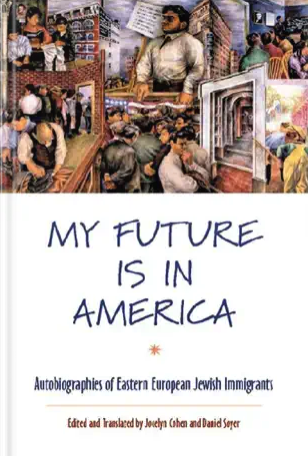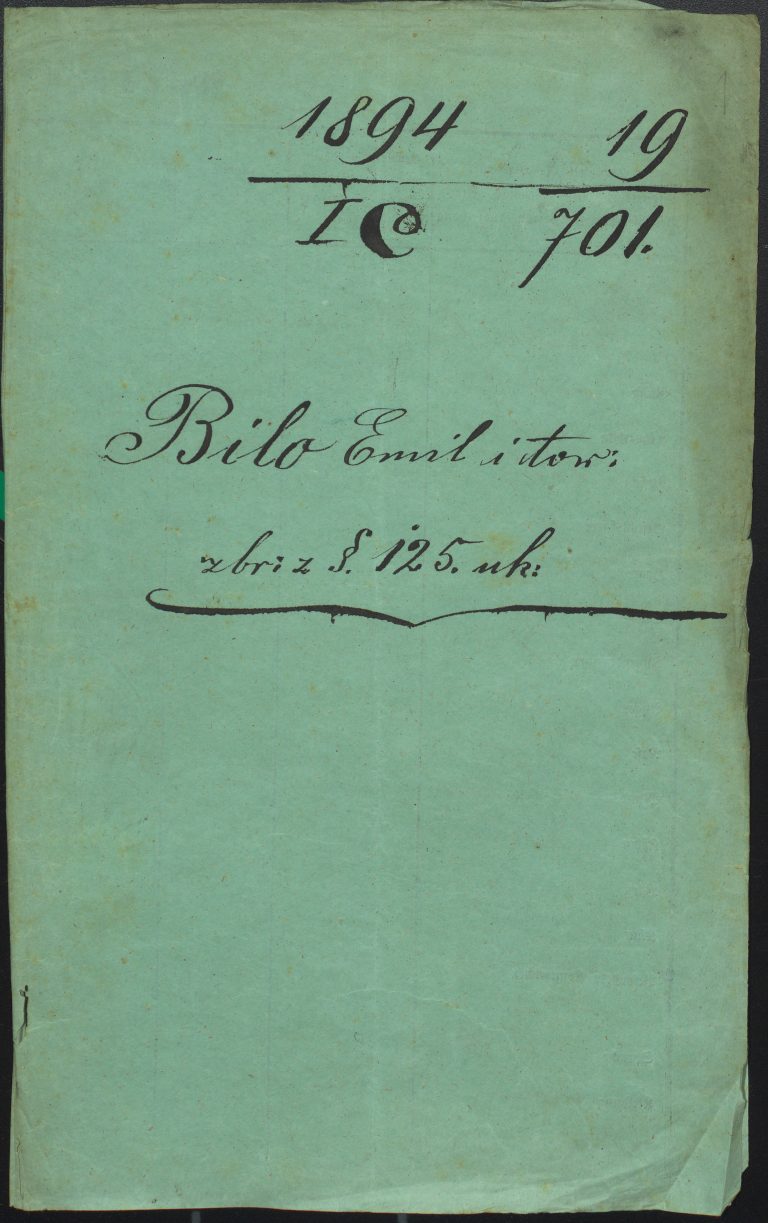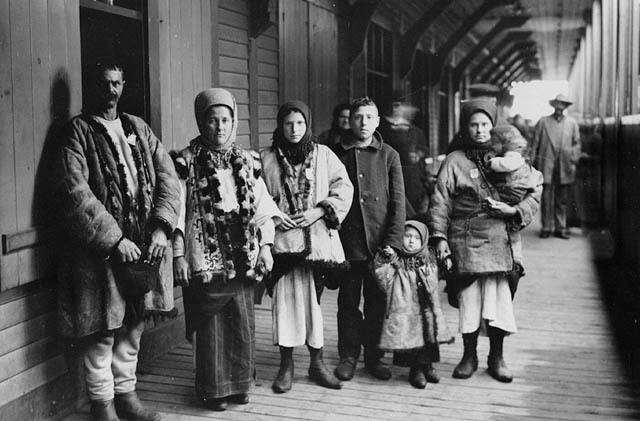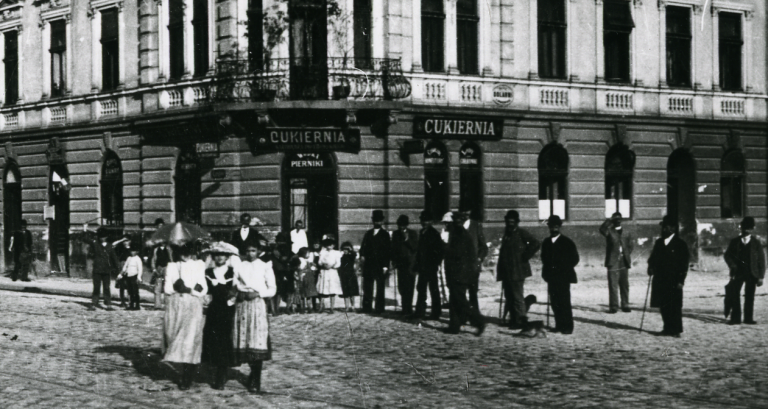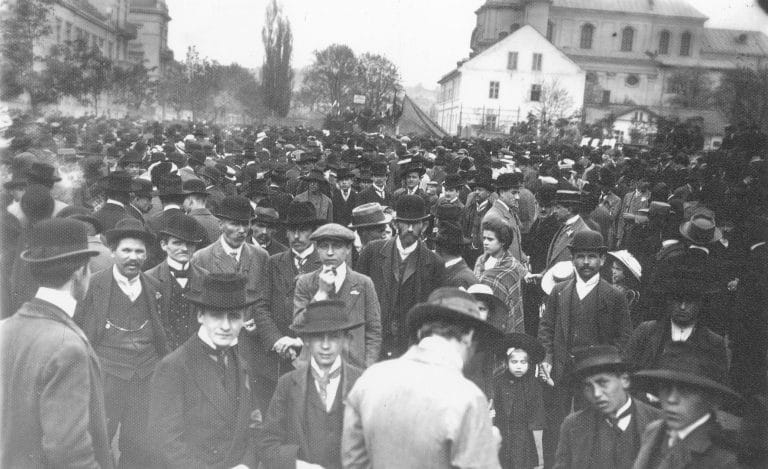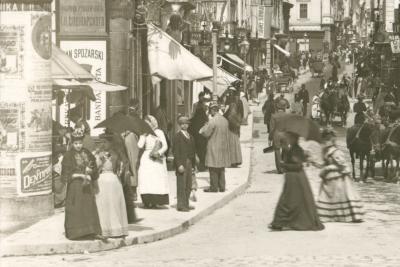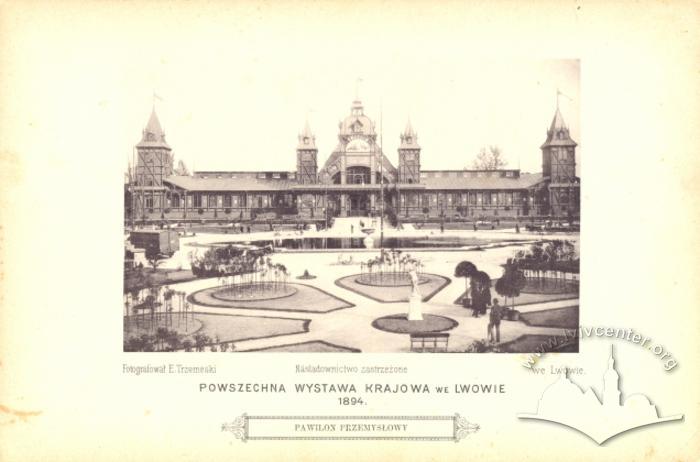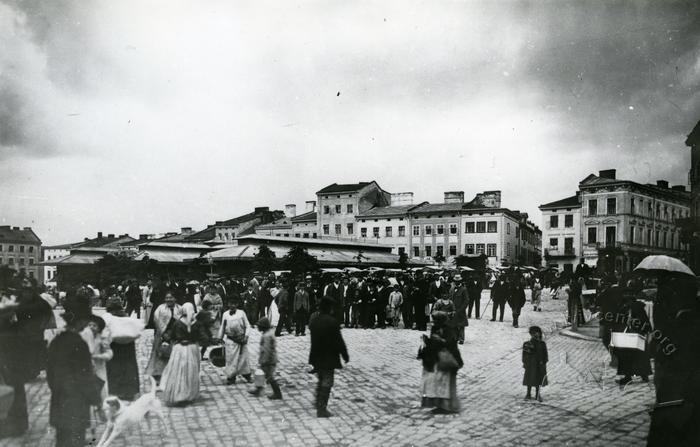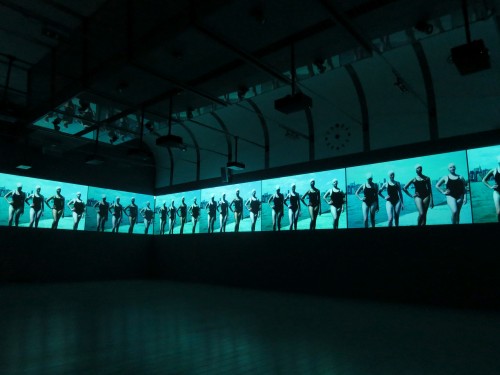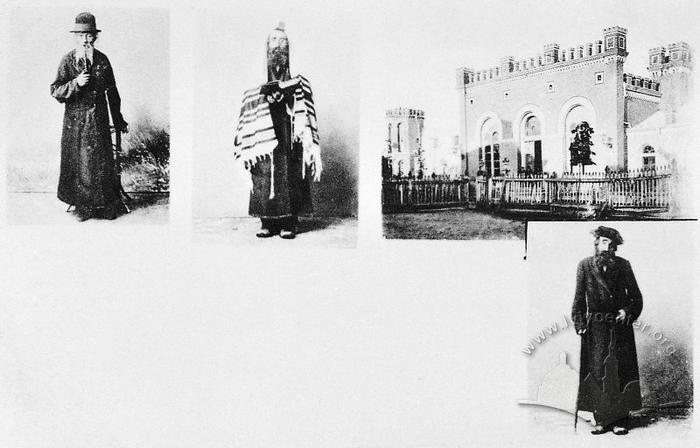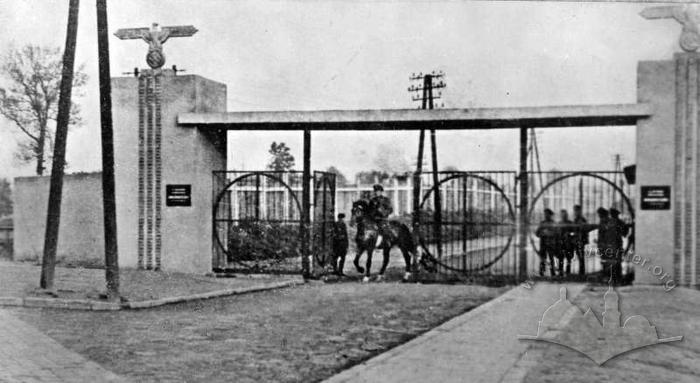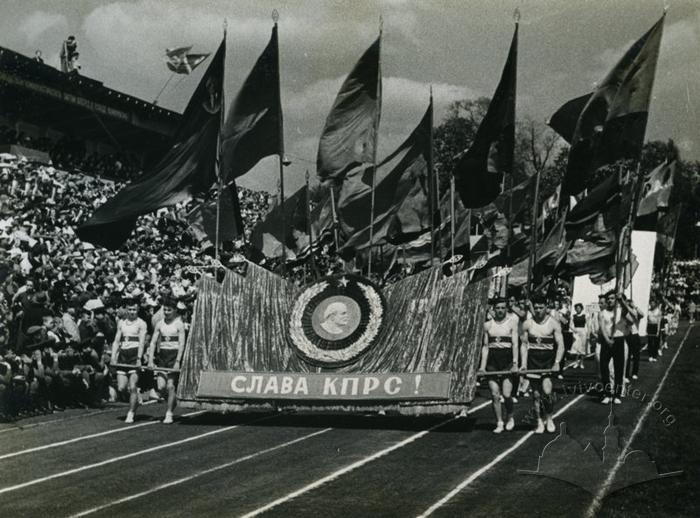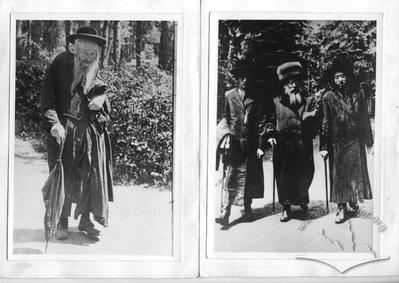1890s
Primary Sources
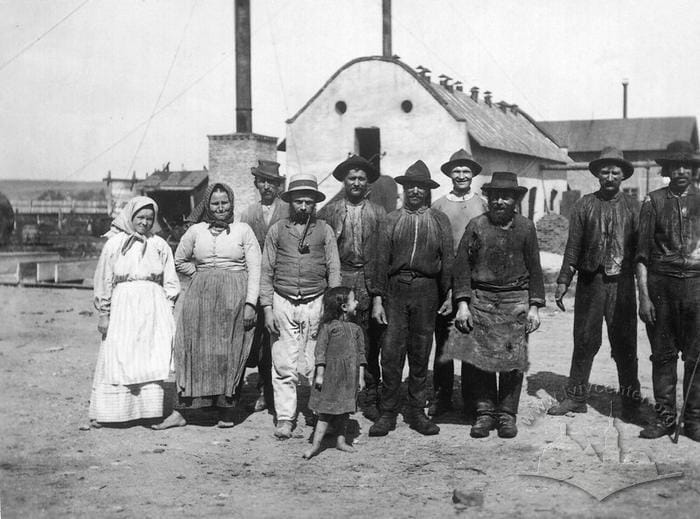
Voice of the Proletariat: Interethnic Relations in the Oil Industry of Boryslav in the late 19th and early 20th Centuries
At the end of the 19th and the beginning of the 20th centuries, oil workers in Boryslav formed a diverse and uneven group that included local Ukrainian peasants, Polish migrant workers from Western Galicia, Jews, and skilled workers from other countries. Some were seasonal labourers who came to work in the mines only when there was no field work in the villages where they permanently resided. Shared origins from the same locality or belonging to the same ethnic or religious group often took precedence over a sense of themselves as a professional group or class. In this respect, the industrial environment in Boryslav resembled the mining industry in new towns such as Yuzivka...
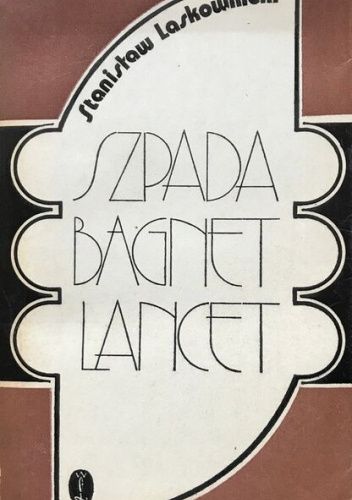
Stanisław Laskownicki on the Work of Lviv Journalists and Publishers at the Turn of the 19th and 20th Centuries
Stanisław Laskownicki (1892-1978), the first Polish professor of urology, stands out as one of the most intriguing memoirists chronicling Lviv. Born into a family of esteemed Lviv journalists, he possessed an extensive knowledge of the city’s notable figures and the inner workings of various editorial offices. Additionally, with a diverse range of interests, he offered insights into the leisure activities of Lviv’s youth, including sports, duels, and academic pursuits. His memoirs, titled Szpada, bagnet, lancet were published in two editions in 1970 and 1979. The excerpts provided here illuminate Lviv’s daily newspapers, recount typical anecdotes from the lives of journalists and their friends and shed light on the founding and evolution of the...
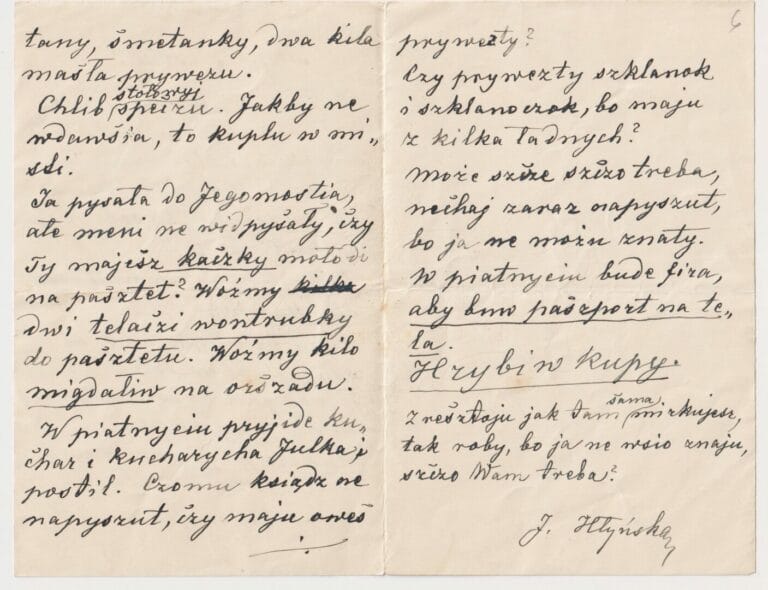
Galician Holiday Cooking in the Letters of the Hlynskyi Family, 1890s-1920s
The letters presented here are from the correspondence of the Hlynskyi family: the Greek Catholic priest Isidor Hlynskyi, his mother Yuliia Hlynska (née Bilynska), and Anastasia Kuzyk, the housekeeper in Isidor's household. They discuss various topics, including the festive menus of church celebrations in the Galician village of Butsniv near Ternopil, where Isidor Hlynskyi served as a priest from 1887 to 1931. The author of the first two letters, dating approximately from 1890 to 1892, is Yuliia Hlynska, the widow of the priest Kuprian Hlynskyi, Isidor's mother, who lived in Cherneliv-Ruskyi. These letters are written in Ukrainian and transcribed in Latin script. The choice of the Latin alphabet was likely influenced by Hlynska's...

A letter from Olha Barvinska, a teacher at the Lviv school, to her father, 1893
This letter is part of the correspondence between its author, Olha Barvinska (1874-1955), and her father, Oleksandr Barvinskyi, an influential Ukrainian politician. The Barvinsky family lived separately at the time. As an ambassador to the Austrian parliament, Oleksandr was permanently in Vienna while his family lived in Lviv. This letter, among other things, contains an interesting story about Olha's teaching career, which began almost immediately after she graduated from the city women's teacher's seminary. In September 1893, Olha started working as a Ruska (Ukrainian) language teacher at the city's incomplete secondary school. In the letter below, the author describes her invitation to work at the first Ukrainian women's private educational institutions in Lviv,...

Child maintenance in the Russian Empire
This source concerns a case that was brought to a district court in Veisenshtein (now Paide in Estonia) in the late nineteenth century. The complainant, Lena Izup, was an illiterate Estonian-speaking peasant who worked as a domestic servant. Her complaint lay with Mart Tambok, another Estonian-speaking peasant who she claimed was the father of her child. Lena Izup asked Revel’ District Court to ‘make an order’ against Tambok, which meant force him to acknowledge paternity and pay financial maintenance for the child’s upbringing. The case was heard in September 1890 and Mart was ordered by the court to pay Lena a one-off sum of 15 rubles, plus 10 rubles per year of child...
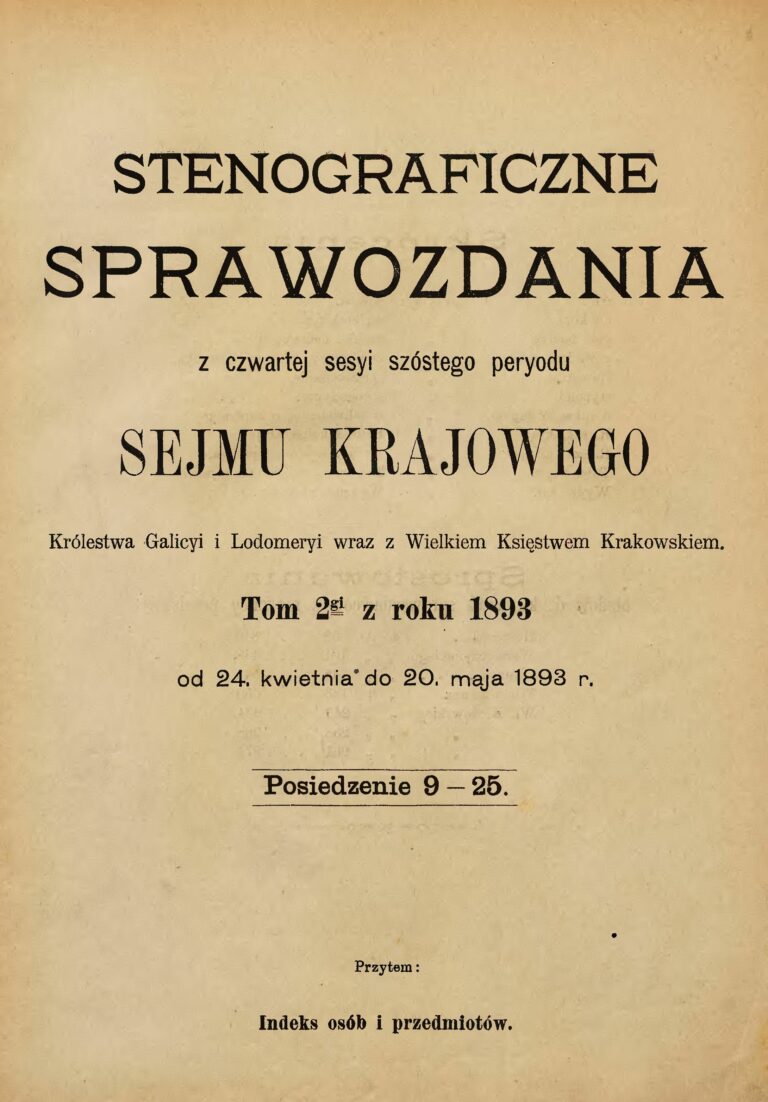
Sejm Discussion about the Role of Ukrainians in the General Regional Exhibition in Galicia in 1894
The document presents a discussion between Ukrainian and Polish deputies in the Galician Sejm taking place in Lviv on May, 15, 1893. One of the issues during that day session was about the report of the budget commission requested by the executive committee of the 1894 Regional Exhibition on allocating a subvention the exhibition’s implementation. Despite the financial component of the matter, the discussion went beyond to a broader political dimension and showed Polish-Ukrainian relations in Galicia in the end of the 19th century. The first rapporteur among the Ukrainian deputies was Yaroslav Kulachkovskyi, director of the Dnister insurance company. He spoke about the goal of the future exhibition presented by the executive...
Show more
Collapse all

“Jewish Grandmother”, photo by Lewis Hine
Lewis Hine (1874-1940) was an American photographer who tried to draw attention to social issues such as migration or child labor. He took two series of photos on Ellis Island, an island near New York City that was the first stop and gateway for new arrivals. Photos of Lewis Hine are trying to show the identity of migrants, who were often exoticized and othered in the American press. The Jewish woman in the photo is dressed in clothes that do not distinguish her from other migrants from Eastern Europe. However, although Jewish migration was often also motivated by economic motives, in the public discourse and historiography of the early twentieth century, it was...
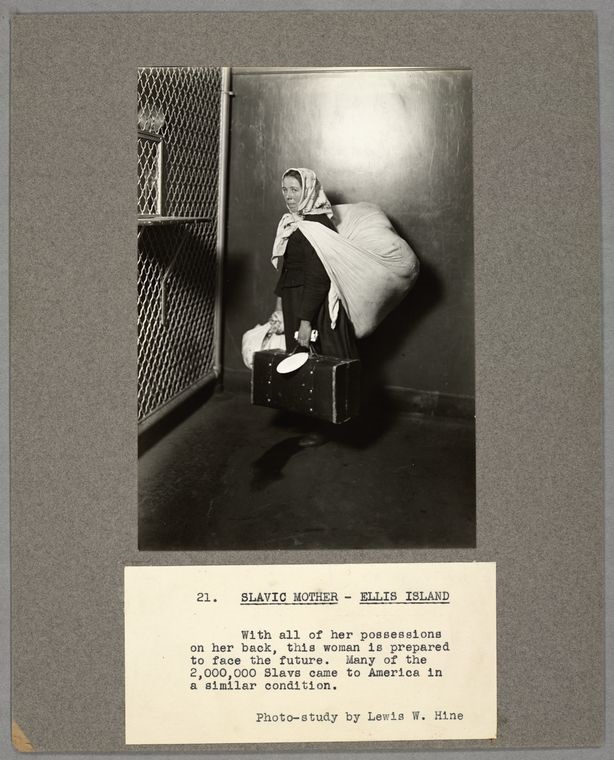
“Slavic Mother”, photo by Lewis Hine
Lewis Hine (1874-1940) was an American photographer who tried to draw attention to social issues such as migration or child labor. He took two series of photos on Ellis Island, an island near New York City that was the first stop and gateway for new arrivals. Photos of Lewis Hine are trying to show the identity of migrants, who were often exoticized and othered in the American press. The name of the photo "Slavic Mother" shows that Eastern Europe for Americans was still a space, which differences and nuances they hardly noticed. Hine perceives the woman in the photo as a person who left Europe forever, taking along all her posessions, and having...

For the Family Hearth, a 1970 film
The film is an adaptation of the novel of the same name by Ivan Franko, written in 1892. In his story, the problem of sexual slavery (or “white slavery” in the terms of those times) and women’s engagement as its victims and enablers. The author’s choice of topic must have been influenced by the lawsuits against human traffickers that were actively taking place in Galicia at this time. One of the most high-profile cases was the Lviv trial in 1892 against 27 traffickers (men and women) accused of organizing sexual traffic abroad. The investigation confirmed 29 cases of selling girls from Galicia to brothels in Constantinople, Egypt, and India. The “white slavery” usually...
The end of the 19th century through the beginning of the 20th century is known as the period of mass migration from Europe to other continents, when more than 55 million people changed their place of residence. In particular, this process captured the Russian and Austro-Hungarian empires, where a difficult economic situation, job shortages, and persecutions stirred various groups of the population to leave. Such groups included both Ukrainian and Polish peasants, and Jews from urban centers who were small-scale craftsmen or workers. Most often, they moved to the United States, Canada, Argentina, and Brazil, where labor was needed at factories or farms.
In the 19th century, the gender pact dividing public and private spheres, as man-owned and women-inhabited, found its most solid reasoning. In this vision, the city as the most obvious embodiment of public life, seemed to be male by default. Women in the city were taken as potentially threatened. This was evidenced by a number of prohibitions, which could include not only certain places inaccessible to women, such as universities in Lviv until the late 1890s, but also ordinary everyday experiences that they could claim only at the cost of their own reputation. In this module, historian Ivanna Cherchovych will try to look at the city from its women's experiences.
The "The City as a Stage: When Politics Takes to the Streets" project focuses on mass events in the public space of Lviv during the Habsburg period, which took place in the open air – on the streets and squares of the city. As the political center of Galicia, the "royal capital city" of Lviv was simultaneously considered the "capital of the freest part of Poland" and the "capital of Prince Lev." Political and national confrontations were concentrated here. Although the population of Lviv at that time consisted mainly of Poles and Jews, followed by Ukrainians, it was the competition between Ukrainians and Poles that was most significant. These two groups declared their...
The three stories presented in this text are dedicated to three different women united by one city. Sharing a common urban space, they experienced it in different ways, given their different social positions, status and starting opportunities. The time in which they had to live their lives was in one way or another reflected in microstories from the life of each of these women. The first story is dedicated to Maria Hrushkevych, a long-time employee of the Lviv post office, who was among the "first" women employed by the state. In the second, Maria Linchak will be talked about, who was a maid in the house of Teofil and Liudmyla Hrushkevych, a chorister...
At the time of autonomy, the General Regional Exhibition was the third attempt by Galician elites to show their achievements in the industrial, economic, and cultural development of the region. The first such attempt took place in Lviv in 1877, the second in Krakow in 1887. In turn, the next one was to open its gates to visitors in 10 years in Lviv. The official countdown to the beginning of its opening began in June 1892, when the Main Exhibition Committee was formed. The monetary fund of the exhibition was filled with donations from county communities, government subventions and the Provincial Office, the City Council of Lviv, individuals, and organizations. Most of the...
On Sunday, September 10, 1893, at about 11 p.m., in the vicinity of ul. Rappaporta, Maria Kopańska, a maid, was attacked by four men — Stanisław Julian Starzewski, Michał Bendyk, Antoni Równy and Emil Bilo. The company was returning from a restaurant on ul. Szpitalna. As they later admitted, they "had been drinking vodka and beer" there. On ul. Rappaporta they saw Maria, who was walking home alone from a wedding. For the woman, the encounter ended in a gang rape. The court proceedings, which soon began on the victim's claim, although confirming the fact of violence, released three defendants from criminal liability. The fourth one, Emil Bilo, was never brought to trial,...
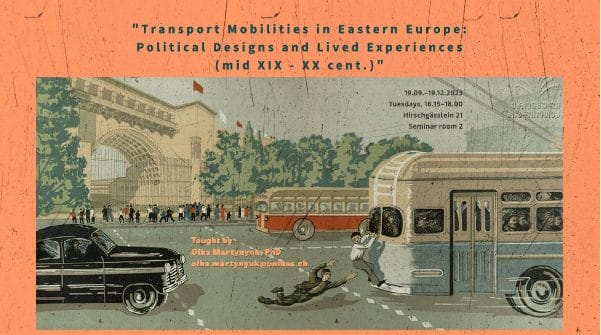 Transport Mobility in Eastern Europe: Political Designs and Lived Experiences (mid XIX – XX Century)
Transport Mobility in Eastern Europe: Political Designs and Lived Experiences (mid XIX – XX Century)
The course invites to explore East-European History of mid XIX - late XX cent. through the concept of mobility, which encompasses movement of people, goods and ideas. Students will deal with a corpus of texts on social history of transportation, as well as with a rich array of visual materials. Of special interest will be cases, specific to the region, for example cultures of Christian and Muslim pilgrimage, Socialist rallies, trolleybus infrastructures or “destalinization” of metro stations. Cases of imported western technologies will provide ground for interregional comparisons, not only in aspects of introduction of transport system, but also in aspects of their exploitation and disintegration. The course is built on a premise...
East-Central Europe played a vital role in the global history of mass migration and experienced an enormous variety of mobility processes in the long 19th and short 20th centuries. For instance, mass emigration from the Russian and Austro-Hungarian Empires and the Soviet Union, human trafficking, labor migration, forced migration during WWI and WWII, refugee crises and asylum, travel, and professional mobility. The voluminous scholarship on this chapter of migration history has lots of gaps and, notably, is almost absent from history curricula. This introductory course broadens our lens to examine the role of migration and mobility for the places where it occurred as well as the experiences of migrants, displaced persons, refugees, and...
The course explores the history of Russia as an empire from Peter I up to now in the methodological perspective of the new imperial history. What are the historical preconditions and sources of Russian imperialism and militarism? How did the small principality of North-Eastern Europe manage to create the largest empire in the world? To what extent the Russian Empire of the 18th and 19th centuries differed from European colonial empires as well as eastern imperial polities such as Ottoman Empire and China? How did the imperial nationalities policies emerge and evolve? What role did the competition between "great powers" play in turning Russia into an empire? The course attempts to answer these...
The aim of the course is to get to know how to analyze examples of visual culture, including: fiction films and documentaries, video, photography. Both contemporary and historical materials will be studied, together with theoretical texts and publications (from the area of film and media studies, anthropology, cultural studies and history. Although images are mostly seen, if you want to really know them and understand them really well, you must not only "see" them but also "read" them, that means to analyze them as a complex message/ text. That is why at our course we will firstly discuss some terms and categories, that would help us to read images such as: composition, convention,...
This course forms a part of Jewish History and Culture of East Central Europe in the 19th-20th Centuries summer school. The syllabus is availible only in Polish.
This course was a part of Jewish History and Culture of East Central Europe in the 19th-20th Centuries summer school. The syllabus is written in Polish.
In our mini-course we will explore cultural interaction between Jews and non-Jews (Ukrainians, Poles, Russians) in the borderlands of the Habsburg and Romanov empires. This is interaction that may have been conscious or unconscious, and may have involved encounter, appropriation, negotiation, exchange and destruction.
This short course looks at Jewish history in the context of two multinational empires: the Russian and the Habsburg. Both of these states must be understood as fundamentally pre-modern, non-national (even anti-national) political structures, a fact that is crucial for understanding Jewish history here. In the mid-19th century, the great majority of world Jewry made its home in this region and even at the end of the First World War, after the great wave of emigration to the Americas, western Europe, Erets Israel / Palestine, and South Africa, the Jewish presence here was considerable. In 1918 even antisemites could hardly imagine a Warsaw, Wilno, Lwów, Odesa (etc.) without Jews.
Ukraine’s twentieth century was tragically marked by much politically motivated violence and authoritarian regimes as well as movements, from the radical left and the radical right. These forces and events did not only do great harm in the past but left memories and legacies that are still challenging to contemporary Ukraine. In this class, we will focus on several key issues of history, memory, and politics. The readings cannot be exhaustive. Instead, our aim is to read and discuss a sample of important short texts that allow us to reflect more broadly on the underlying questions.
This course was a part of Jewish History, Multiethnic Past, and Common Heritage: Urban Experience in Eastern Europe summer school (July 13 – August 7, 2015. Center for Urban History. Lviv, Ukraine).
This course was a part of Jewish History, Multiethnic Past, and Common Heritage: Urban Experience in Eastern Europe summer school.
This course forms a part of Jewish History, Multiethnic Past, and Common Heritage: Urban Experience in Eastern Europe summer school. The syllabus is available only in Polish.
This course forms a part of Jewish History, Multiethnic Past, and Common Heritage: Urban Experience in Eastern Europe summer school.
The course will cover the major development of the East European Jewry from the mid-eighteenth century till the present. More specifically, it will focus on the apparently largest category of modern Jewish history, i.e. modernity itself. The course will start with the discussion of what modernity means in contemporary scholarly discourse, and—more specifically—how it is applied today in historiography of East European Jewry. This introduction will provide a frame for the focus of the course: the analysis of the changing life patters and differing strategies of adopting, rejecting, or negotiating modernity in every-day lives of East European Jews.

